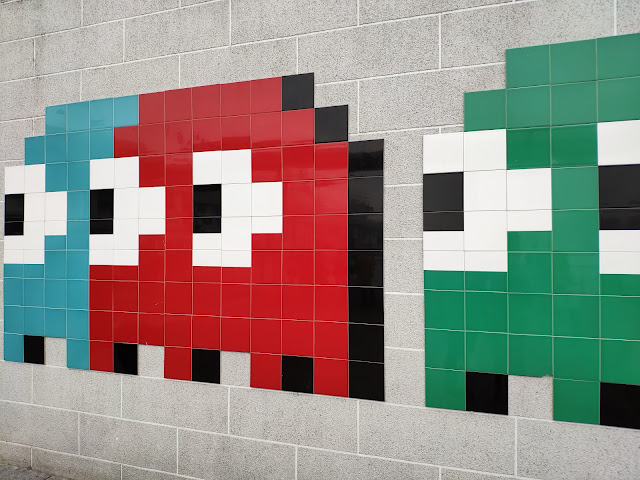Do You Remember Pac-Man?
Pac-Man was first released in Japan on May 21, 1980, then released in the United States by October of the same year. An icon of the 1980s, Pac-Man, a yellow, pie-shaped character who eats dots and avoids ghosts as he travels through a maze, was quickly popularized in the video game world. Its innovative design has been the focus of numerous books and academic articles. Pac-Man continues to be one of the most popular video games of all time, influencing the evolution of sophisticated games we play today.Namco in Japan created the game, which Midway in the United States released. In 1981, there were 100,000 Pac-Man machines in the United States, which played approximately 250 million Pac-Man games per week. Almost all video game platforms have released Pac-Man since then. A playable version was even included in the Google Doodle for the 30th anniversary of Pac-Man's release on May 21, 2010.
Early Years of Pac-Man
As a counterbalance to violent video games such as Asteroids, Space Invaders, Tail Gunner, and Galaxian, Japanese game designer Toru Iwatani designed Pac-Man. With Pac-Man, video games would take off as an innovative break from the shoot-em-up style.Pac-Man fights off enemies by chewing them up rather than firing ammunition at them. A number of references to food appear in the game: Pac-Man consumes pills in his path, fruits as bonuses, and power pellets, which originally appeared as cookies. Some sources report that a pizza inspired the shape of the yellow Pac-Man character with a slice through it.
Originally known in Japan as Puck-Man, the game was changed for American arcades to Puck-Puck (sometimes spelled paku-paku). Puck-Puck is an onomatopoeia for munching.
Playing Pac-Man
A keyboard arrow or a joystick is used to control Pac-Man in the game. During the game, Pac-Man has to move around the maze-like screen to consume lines of 240 dots and avoid or attack four hunting ghosts (also called monsters).In addition to Blinky, Inky, Pinky, and Clyde, four ghosts come in different colors: Red, Blue, Pink, and Orange. Blinky, for example, moves faster than Shadow, thus being called Shadow because it attacks from behind. After the game begins, the ghosts roam around the board outside of the "ghost cage" in the center. A ghost damages Pac-Man, and if he collides with it, the game restarts.
The ghosts can be eaten if Pac-Man eats one of the four power pellets in the corners of each level. Upon being gobbled up, a ghost disappears, but its eyes reappear in the ghost cage to fight once more.
A bonus object may be gobbled up in the form of fruit or another object for additional points, with each fruit having a different value. Pac-Man loses all of his lives (usually three) when the game ends.
Pac-Man Popularity
Early in the 1980s, Pac-Man's fun and nonviolent nature enabled it to become a phenomenon. In 1982, 30 million Americans played Pac-Man at arcades and bars, feeding quarters into the arcade or bar games. The arcades where Pac-Man machines were found were noisy and congested places. Pac-Man was wildly popular among teenagers but threatening to their parents. To combat gambling and other "immoral" activities, many towns in the United States passed laws regulating or restricting the games, much like their laws regulating pinball machines and pool tables. Des Plaines, Illinois, banned underage video game players from playing alone. A Massachusetts town outlawed video games in its entirety. Some cities limit video game playing through licensing or zoning.Ms. Pac-Man and More
Several unauthorized spin-offs of Pac-Man were released within a year after it became hugely popular. Ms. Pac-Man, an unauthorized version of the game that first appeared in 1981, is the most popular of these games.Developed by Midway, the same company that distributed the original Pac-Man in the United States, Ms. Pac-Man grew in popularity to the point where Namco ultimately made it an official game. Pac-Man has only one maze with 240 dots, but Ms. Pac-Man has four different mazes with varying numbers of dots; the walls of the maze, the dots, and the pellets come in several colors; and the orange ghost is named "Sue," and not "Clyde."
In addition to Pac-Man Plus and Professor Pac-Man, others notable spin-offs include Pac-Land, Pac-Man World, and Pac-Pix. Throughout the 1990s, Pac-Man became available on computers, consoles, and handheld devices.
Pac-Man Pop Culture
Pac-Man is simply a yellow chewing machine shaped like a hockey puck. Despite its simple appearance and sound, the Pac-Man character is a worldwide icon, making it recognizable to everyone. American consumers recognize Pac-Man more often than humans as celebrities, according to the Davie Brown Celebrity Index published in 2008.Originally, Pac-Man fans could purchase items like T-shirts, coffee mugs, stickers, a board game, plush dolls, belt buckles, puzzles, a card game, wind-up toys, wrapping paper, pajamas, lunch boxes, and bumper stickers.
Two cult phenomena emerged from Pac-Man mania: a Hanna-Barbera Pac-Man cartoon from 1982 through to 1984; and a Jerry Buckner and Gary Garcia novelty song called "Pac-Man Fever" that topped Billboard's Top 100 chart in 1982.
Continue the conversation by leaving your memories of Pac-Man in the comments below.

 shareasale.com
shareasale.com StickerShoppe.com
StickerShoppe.com



.jpg)
 Elfi Santa
Elfi Santa

0 Comments